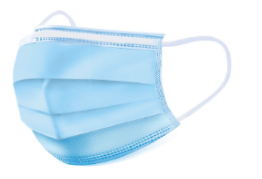The Future of Mask Breaks at Hastings High School

April 28, 2022
As the days go by, we are shifting more and more towards a normal lifestyle. The recent lifting of the mask mandate at schools has been a major part of that change this school year.
However, will the policy of mask-breaks carry over past the pandemic?
I was able to speak with principal, Mr. Adipietro, as well as several students and teachers, to gauge their perspectives on the future of in-class breaks at Hastings High School.
During the height of the pandemic, when masks and social distancing were mandated, Mr. Adipietro and a majority of teachers were in favor of mask breaks.
“Wearing a mask for that long of a period of time is very constricting” said Mr. Ralston, a history teacher, adding that given the amount of stress during the pandemic, he thought that breaks outside were “appropriate for the mood of the school.”
Language teacher Ms. Alfonso, who also supported mask breaks during the early days of the pandemic, added that “especially in a language class, wearing a mask for 80 minutes straight was hard.”
Overall, the faculty I spoke with felt that mask breaks were a necessary addition during the pandemic. But now that masks are gone, what is the future of these breaks?
Mr. Adipietro said that he has told teachers that he encourages teachers to allow for continued brain breaks because students felt they were beneficial. He did acknowledge there were a few downsides to these breaks including that some students may “misbehave” or take advantage of the break time.
“I am still in favor of breaks,” Mr. Adipietro said. “80 minutes is a long time, and students need to stretch their legs. I still think we should have breaks ,and I have made that clear to faculty.”
There is some scientific backing to Mr. Adipietro’s encouragement to keep breaks in classes. According to the American Academy of Pediatrics, any kind of physical break helps students become more attentive and perform better cognitively when they return to the classroom. Breaks can also increase their productivity.
However, Dr. Vince Bertram, the New York Times bestselling author of One Nation Under Taught: Solving America’s Science, Technology, Engineering, and Math Crisis, suggests that breaks in class might also cause significant learning loss, cutting into already precious teaching time.
Despite what Principal Adipietro has advocated, the three teachers I talked to all said that they stopped taking mask breaks. Mr. Ralston explained that “old habits die hard,” and he wanted to create as much normalcy as possible and that meant returning to more traditional classroom protocols, which did not include breaks throughout the period.
Ms. Royal and Ms. Alfonso both agreed that venturing outside for five or more minutes is unnecessary now that masks are mostly gone, but they both think that a quick break in class could be constructive.
“A well taught class can have a quick break worked into it without losing any teaching time,” Ms. Royal said.
In the end, whether Hastings High School will continue with brain breaks is at each teacher’s discretion, and, according to Mr. Adipietro, he has no plans to make brain breaks mandatory. Most students and the teachers I talked to liked the idea of a quick break in the middle of class to let students decompress. However, going outside for said break three or four times a day will likely become a part of the pandemic past.

















